
Dwayne Johnson can’t stop talking about Shazam.
The wrestler-turned-actor (also known as The Rock) was the first to murmur that he might be considering a film role as either hero or villain in a film version of the series. Now confirmed as villain Black Adam, Johnson recently implied that the movie would reach theaters much sooner than its promised release year of 2019. It seems he even chose the villain role over that of the title character.
He seems very much like a wrestler when he talks about it, getting people all excited for the big fight and not even caring whether he’s a “face” to be cheered or a “heel” to be booed, to use the wrestling terms. But if he helps the movie’s success, he’ll be a hero to Shazam’s alter ego Billy Batson, a boy who’s suffered decades of abuse from the art form that once seemed to be his home.
It’s strange, really. For some time in the 1940s, Captain Marvel was outselling Superman in the comics shops. He also beat him to film, at least unofficially: his adventure serial came before Superman’s. And he headlined not one but two TV shows. How did things come to this?
Billy’s magic lightning bolt may give him the courage of Achilles, but he also seems to have picked up Achilles’ misfortune.
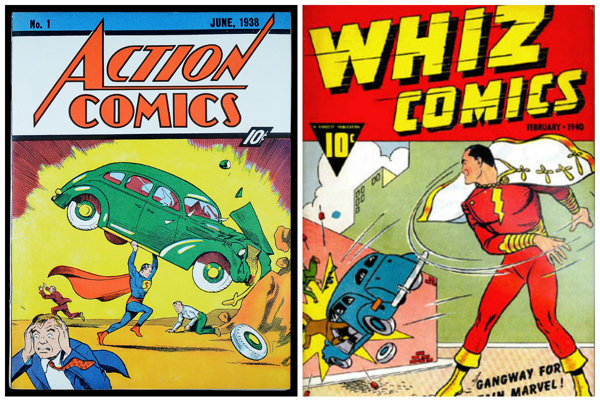
Superman’s creators Siegel and Shuster were teenage, science-loving, first-generation nerds, and for all Superman’s power, an intellectual discipline governed his early stories. There was a quasi-Darwinian explanations for his strength—millions of years of evolution, and, later, the heavier gravity of Krypton. He may have seemed to fly in the cartoons, but the early comics assured us he was really just leaping like a grasshopper. His earliest foes were spies and run-of-the-mill crooks—real-world concerns that “justified” the escapism.
Captain Marvel could fly for real. His creators, adults with less need to prove themselves serious thinkers, regarded themselves as purer children’s entertainers, and his stories read as if an excited child was telling them to you:
And whenever Billy says SHAZAM he gets the power of six old guys whose names all begin with S, H, A, Z, A an’ M—Solomon’s smarts and Hercules’ strength and Achilles’ heel, I mean courage, and Zeus and Atlas and Mercury, but then he can never say SHAZAM unless he wants to turn into Billy, which is a problem because his wizard ghost friend who gave him the power is named Shazam too—And his best friend is a talking tiger and Shazam’s house can take Captain Marvel anywhere in any dimension and his biggest enemies are this short, bald, ugly mad scientist who has all these evil inventions, and this worm with a radio loudspeaker around his neck, and there’s his sister Mary Marvel and the Lieutenant Marvels and Captain Marvel Junior and Uncle Marvel—
This all plays really well when your target audience is seven, but today’s complex comics continuities tend to prefer things that have to be explained.
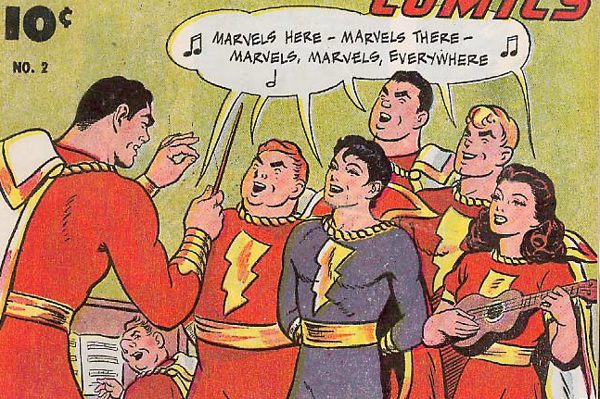
Villains frequently captured and gagged Billy, but no one did him or his family any serious or irreparable harm. Like his fellow orphans Superman and Batman, he slowly built and discovered his own “family” of fellow superheroes, but unlike them, he never seemed to miss his parents much. His world was full of fun and wonder, and free from lasting pain.
C.C. Beck’s simple art style, cartoony and open, underscored the difference. His Captain Marvel had the squinty, square-jawed look of Superman, and allegedly a separate personality from Billy’s. But later stories made it clear that the innocent boy lived inside that manly face. Captain Marvel would break down and cry when things seemed hopeless, then after turning the tables and sock his archenemy in the jaw, grinning and squealing, “Oh, boy, what joy!” Most often, though, he’d exclaim “Holy moley!” wide-eyed, sometimes breaking into a flop-sweat.
But as the 1940s drew to a close, superheroes were starting to wane in popularity. Horror comics were growing in popularity and Captain Marvel’s creators were under pressure to look a little more like them. The Captain’s adventures got darker, including an atomic-powered robot and at least two adventures within a year that featured giant spiders. There was worse to come.
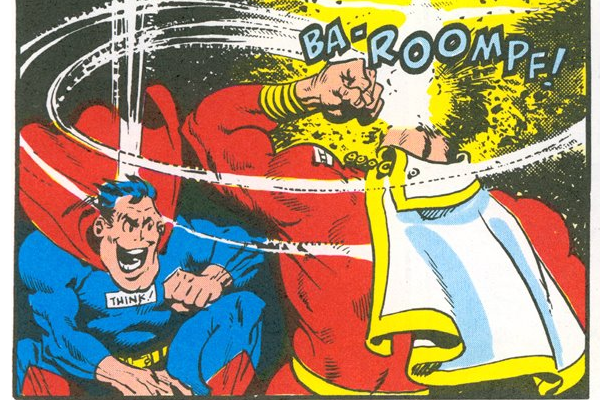
DC Comics, Superman’s publisher, sued Fawcett, Captain Marvel’s publisher, over spurious claims of copyright infringement for years. Eventually, as sales continued to flag, Fawcett agreed to stop publishing Captain Marvel stories. It just wasn’t worth the legal bills any more. Losing a straight-up fight is one thing, but giving up? A greater blow to the innocent worldview of the Captain is hard to imagine.
Respectful of its fallen foe, DC hired Captain Marvel’s scriptwriter for Superman. Superman learned to fly, and his stories got wilder, imitating some of the Captain’s old imaginative flair. Finally, twenty years after Fawcett gave up, DC itself licensed and then outright purchased the Captain Marvel character.
However, those intervening years had seen the rise of another, even mightier Marvel in comics. Perhaps you’ve heard of it?
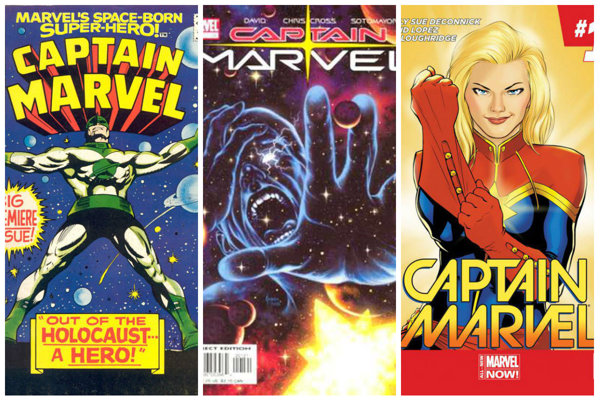
Taking no chances of brand confusion, Marvel Comics had trademarked the name “Captain Marvel” and applied it to a character of its own, an alien superhero who just so happened to be a military captain and go by the name “Mar-Vell,” which, one surmises, is like “Joe Smith” on his planet. When Mar-Vell succumbed to cancer, wouldn’t you know it? He was so inspirational to the superhero community that six other Marvel characters (and counting) took the name, like a crowd of adults playing keep-away with a ten-year-old boy’s favorite ball.
This essentially meant that not only could Captain Marvel not speak his mentor’s name, but he couldn’t appear in a comic book title that used his own name. Those interested in the character’s future like Jerry Ordway, author of The Power of Shazam, struggled under this restriction for decades.
5. His New Name Wasn’t His Own, Either
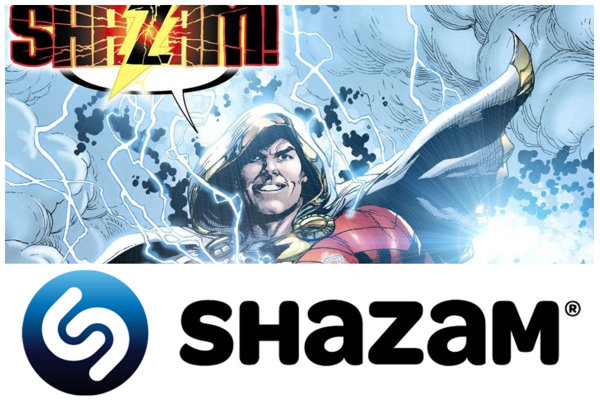
DC ultimately “solved” the problem by renaming Captain Marvel “Shazam,” and renaming Shazam the wizard “The Wizard.” What little explanation they gave struck a note of capitulation to popular tastes, as in Shazam scriptwriter Geoff Johns’ account:
Everybody thinks he’s Shazam already, outside of comics. It’s also, for all sorts of reasons, calling him Shazam just made sense for us. And, you know, every comic book he’s in right now has “Shazam” on the cover.
In other words, what will determine Billy Batson’s future is what the people “outside of comics” think. They just barely remember the Shazam name from his TV appearances, but they do know the “Marvel” name and using it is practically advertising the competition. Also, we decided to use the name for him that we were using for him on the covers, because we were using it. Also, the name makes sense, for reasons.
That same year, the music-identification service also called Shazam grew to two million active users per week, more people than had bought a single issue of Captain Marvel at the height of Billy’s popularity.
The Batson Brood Are Often Just Super-Sparring Partners…
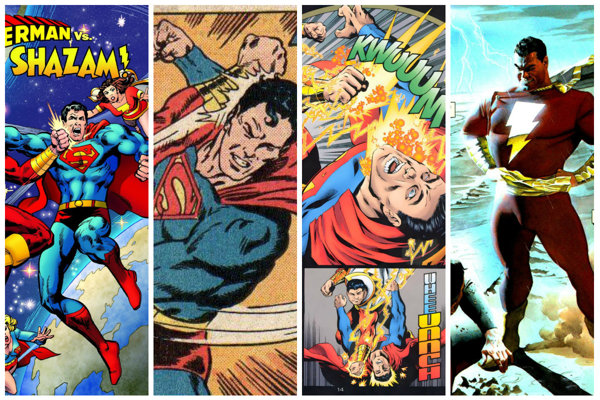
All that said, if a name change is what it takes to get Billy out of comic books, then he may be ready to enter a Witness Protection Program.
Super-Hero Adventure Zealots Age Mercilessly. Even in the 1970s, when Billy joined Superman’s world for the first time, the sunlit, candy-colored adventureland of his heyday was losing appeal to the comic-book-buying demographic. Billy and his pals alternated between starring roles in mid-to-low-selling series and higher-profile guest appearances. In the latter, they seemed to spend most of their time bamboozled or brainwashed into fighting Superman, Supergirl or Wonder Woman—whom they still rivaled in strength but no longer approached in popularity.
And that was gentle treatment by the standards of ensuing decades.
…And Sometimes Just Victims, While Their Villains Roam Free
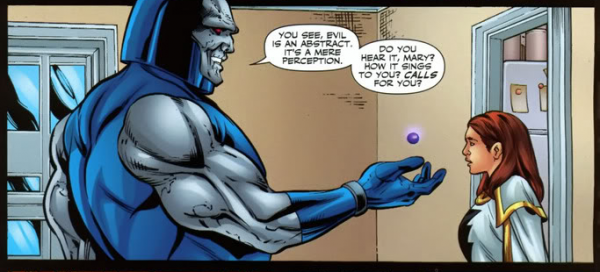
On their best days, their innocence gave them the grace to sacrifice themselves so their more popular counterparts could live and fight on. Their worst days were days of trauma, death and disgrace—while their old foes were free to torture and murder.
In the series 52, Billy’s old foes Black Adam, Sivana and Mister Mind run amok with barely any interference from Billy’s family at all. Black Adam, the ruler of an entire country, straight-up dismembers a guy in the first issue. Meeting a pure soul among his own people seems to mellow him out for a while, and she becomes Isis (a character introduced in a TV series alongside Captain Marvel). Then, wouldn’t you know it? Isis dies and Black Adam goes all the way off the deep end.
Mister Mind becomes the universe-eating “big bad” of the whole series. Yet somehow the plot finds a way for Dr. Sivana to capture and torture both Mind and Adam.
In Countdown to Final Crisis and Final Crisis, Mary Marvel becomes corrupted by her desire to compensate for her sometimes unreliable powers. In The Dark Knight Strikes Again, Billy is pretty much just a patsy for Lex Luthor, much as he is in Kingdom Come, where he’s brainwashed by mind-eating worms.
Superhero Comics Hate Superhero Comedies
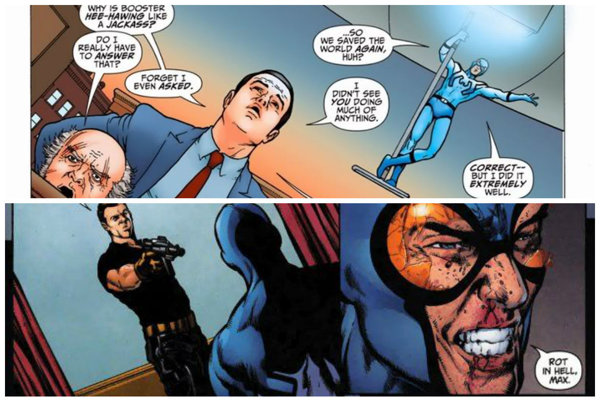
Superhero comic books often eventually “punish” characters who don’t seem to take it seriously enough, this business of dressing in a costume and beating people up.
Justice League International was a 1987-1996 series that bucked this trend, featuring Batman and some cheery, less famous heroes who were only competent when they really had to be. Billy did a stint with the group (although he did get brainwashed into fighting its Superman substitute). The comic was a smash hit for a time, but in the mid-’00s, two of its stars returned to center stage only to be violated and killed.
What’s more, Maxwell Lord, the businessman who organized the “JLI,” was revealed as one of their killers. He revealed that the team’s comical fumbling had all been the result of his psychic manipulation. You didn’t think anyone could be sincerely funny in DC Comics, did you? Glad we got that straight.
Speedball, another happy-go-lucky 1980s creation whose power was literally bouncing off the walls, resurfaced in 2004 as a reality TV star, organizing fights with super-villains for the cameras. One such fight blew up a school, and hundreds died. The guilt moved Speedball to spend a period as “Penance” and redesign his costume to increase the pain he felt during battle. He became, as a temporary ally puts it, “a broken toy, forced to live in a world he was never made for.”
Older, Colder Worlds
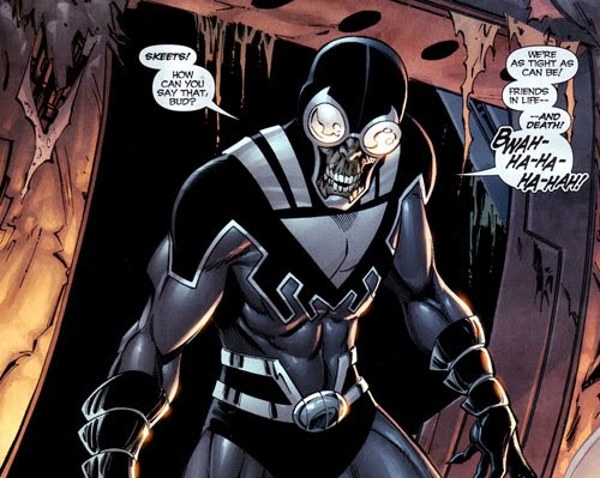
Consciously or not, this dismissal evokes the slogan of another comedic Marvel character, Howard the Duck, frequently introduced as “trapped in a world he never made!”
It pays loving tribute to superhero comics’ past with one hand and derides it with the other. Such commingled contempt and affection turns up often in superhero comics, but it’s ultimately a toxic relationship. DC and Marvel can’t stop hurting their sillier heroes, but can’t let them go, either. Those dead JLI members returned as verbally abusive killer zombies—and, impossible as it sounds, this wasn’t played for laughs.
Billy’s strength of spirit may allow him some dignity in this crueler world, but he can’t thrive in it any more than Christian Bale’s Batman could turn his crimefighting prowess to the world of My Little Pony. And had magic lighting given Billy the powers of Self-Harming,Angst, Zombiism and Amoral Mindscrewing, he might not be so fondly remembered.
Then again, some of the stories about Solomon, Hercules and Zeus aren’t the most kid-friendly fare, either. Every fictional universe exerts a pull on the tone of its characters’ lives: it’s just that market forces in comic books have often led the grungier universes to crowd out the Beckvilles.
So what’s to be done? (Even though this is item #1, click through one more page for the answer.)
Exit Strategy
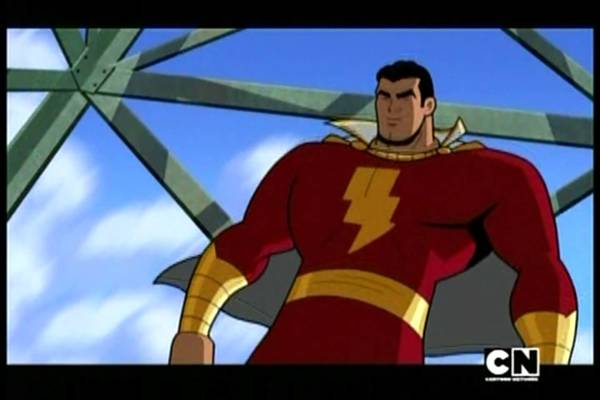
There is some hope that things might be different for the newer generation of lighthearted heroes, as long as their sales remain robust. The last few years have seen more celebration of the innocent pluck of characters like Ms. Marvel, a revived Howard the Duck and a reinvented Batgirl. Even funny-animal superhero Captain Carrot has returned to prominence at DC, starring in the crossover series The Multiversity and Convergence.
And likewise, it’s not like Billy Batson has NEVER been treated well by DC– recent examples include The Multiversity: Thunderworld and Convergence: Shazam! The comics audience is changing, and kid-friendly material has more of a place in it than in the 1990s.
Even so, DC and Marvel are still comics universes where worlds full of “heroes” destroy each other to survive (as in Secret Wars #1) and future dystopias turn heroes into horrifyingly mutated cyborgs (as in the first issues of Future’s End and the more recent Batman Beyond).
Billy’s best shot at restoring his old thunder may be to imitate Superman after all, and rocket away from the world of his birth– the world of comic books– to a more promising land. Maybe it’s time for him to stop trying to be friends with people he always ends up fighting, and spend more time either at the movies or in TV animation. These are nice enough neighborhoods. He can meet more kids his own age there.

No comments:
Post a Comment